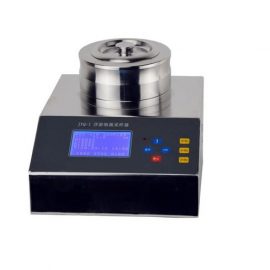
# Microbial Air Sampler: A Comprehensive Review of Applications and Advancements
## Introduction to Microbial Air Samplers
Microbial air samplers are essential tools in environmental monitoring, healthcare, and industrial settings. These devices are designed to collect and quantify airborne microorganisms, providing critical data for assessing air quality and ensuring safety standards. With advancements in technology, microbial air samplers have become more efficient, accurate, and versatile, catering to a wide range of applications.
## Key Applications of Microbial Air Samplers
### Healthcare Facilities
In hospitals and clinics, microbial air samplers play a crucial role in infection control. They help monitor the presence of pathogens in operating rooms, isolation wards, and other critical areas. By identifying potential sources of contamination, healthcare providers can implement targeted interventions to reduce the risk of hospital-acquired infections.
### Pharmaceutical Industry
The pharmaceutical industry relies on microbial air samplers to maintain sterile environments during drug manufacturing. These devices ensure compliance with Good Manufacturing Practices (GMP) by detecting and quantifying airborne contaminants that could compromise product quality.
### Food Processing and Packaging
In food production facilities, microbial air samplers are used to monitor air quality and prevent contamination. They help identify potential sources of microbial contamination, ensuring the safety and shelf life of food products. This is particularly important in environments where perishable goods are handled.
### Environmental Monitoring
Microbial air samplers are also employed in environmental studies to assess air quality in urban, rural, and industrial areas. They provide valuable data on the distribution of airborne microorganisms, helping researchers understand their impact on ecosystems and human health.
## Technological Advancements in Microbial Air Samplers
### Improved Sampling Efficiency
Modern microbial air samplers are designed to capture a higher percentage of airborne particles, including smaller microorganisms. This is achieved through advanced impaction and filtration techniques, ensuring more accurate and reliable results.
### Real-Time Monitoring
Recent advancements have led to the development of real-time microbial air samplers. These devices provide instant feedback on air quality, allowing for immediate corrective actions. This is particularly beneficial in critical environments where rapid response is essential.
### Portability and Ease of Use
Portable microbial air samplers have become increasingly popular due to their convenience and ease of use. These compact devices are ideal for field studies and on-site inspections, offering flexibility without compromising performance.
### Integration with Data Analytics
The integration of microbial air samplers with data analytics platforms has revolutionized air quality monitoring. These systems enable the collection, analysis, and visualization of large datasets, providing deeper insights into microbial distribution and trends over time.
## Challenges and Future Directions
Despite their numerous advantages, microbial air samplers face challenges such as variability in sampling efficiency and the need for standardized protocols. Future research should focus on addressing these issues, as well as exploring new technologies like biosensors and artificial intelligence to further enhance their capabilities.
## Conclusion
Microbial air samplers are indispensable tools in various industries, offering critical insights into air quality and microbial contamination. With ongoing advancements, these devices are becoming more efficient, accurate, and user-friendly, paving the way for improved safety and environmental monitoring. As technology continues to evolve, the potential applications of microbial air samplers are expected to expand, further solidifying their role in safeguarding public health and industrial processes.
Keyword: Microbial Air Sampler
